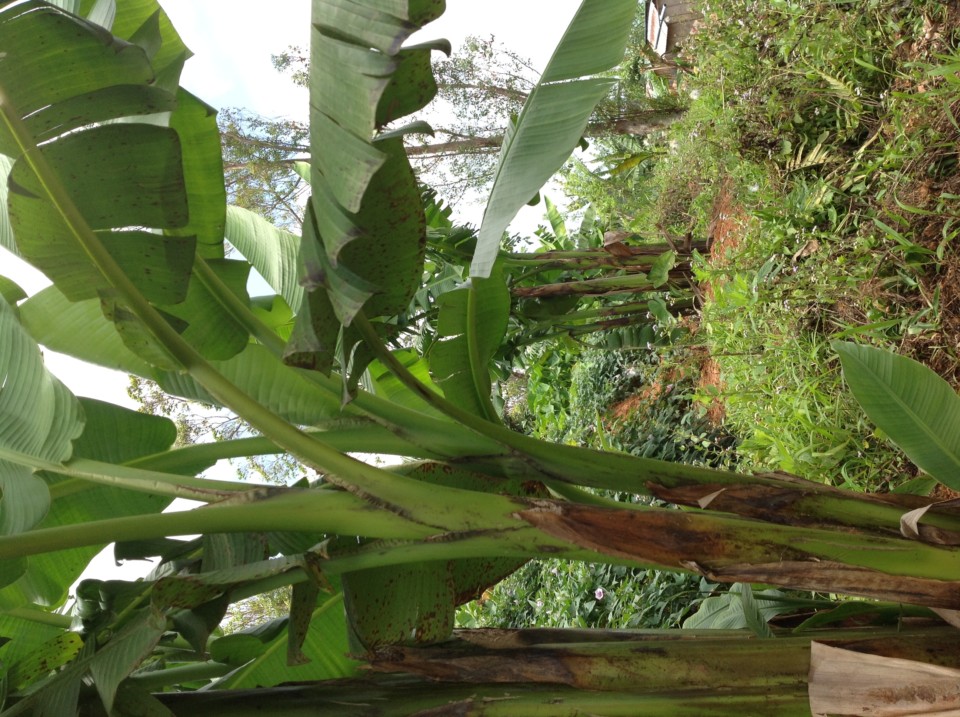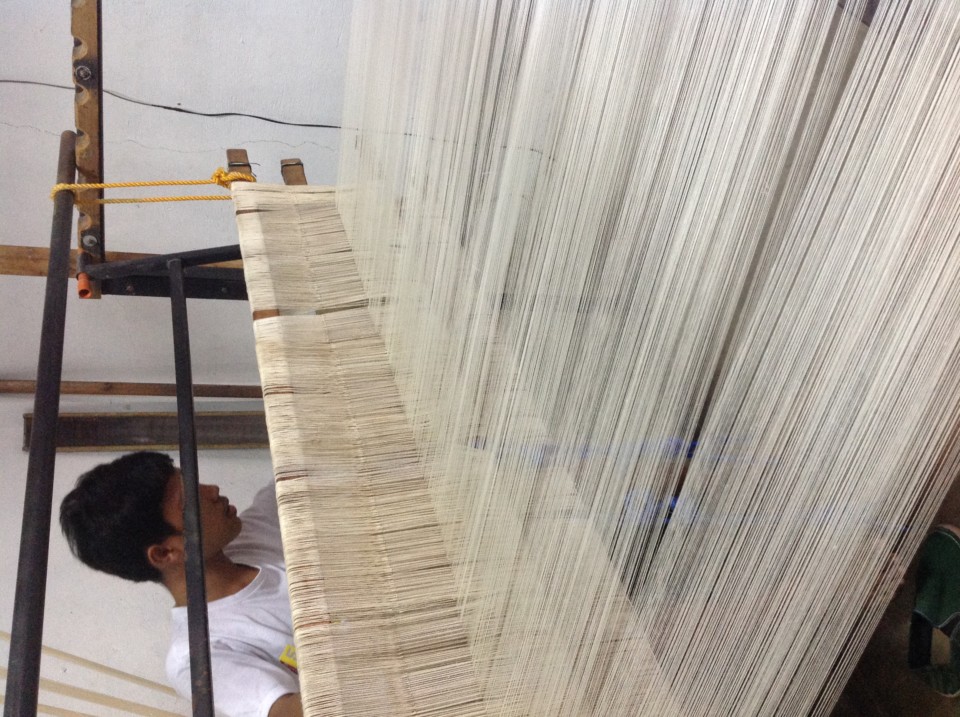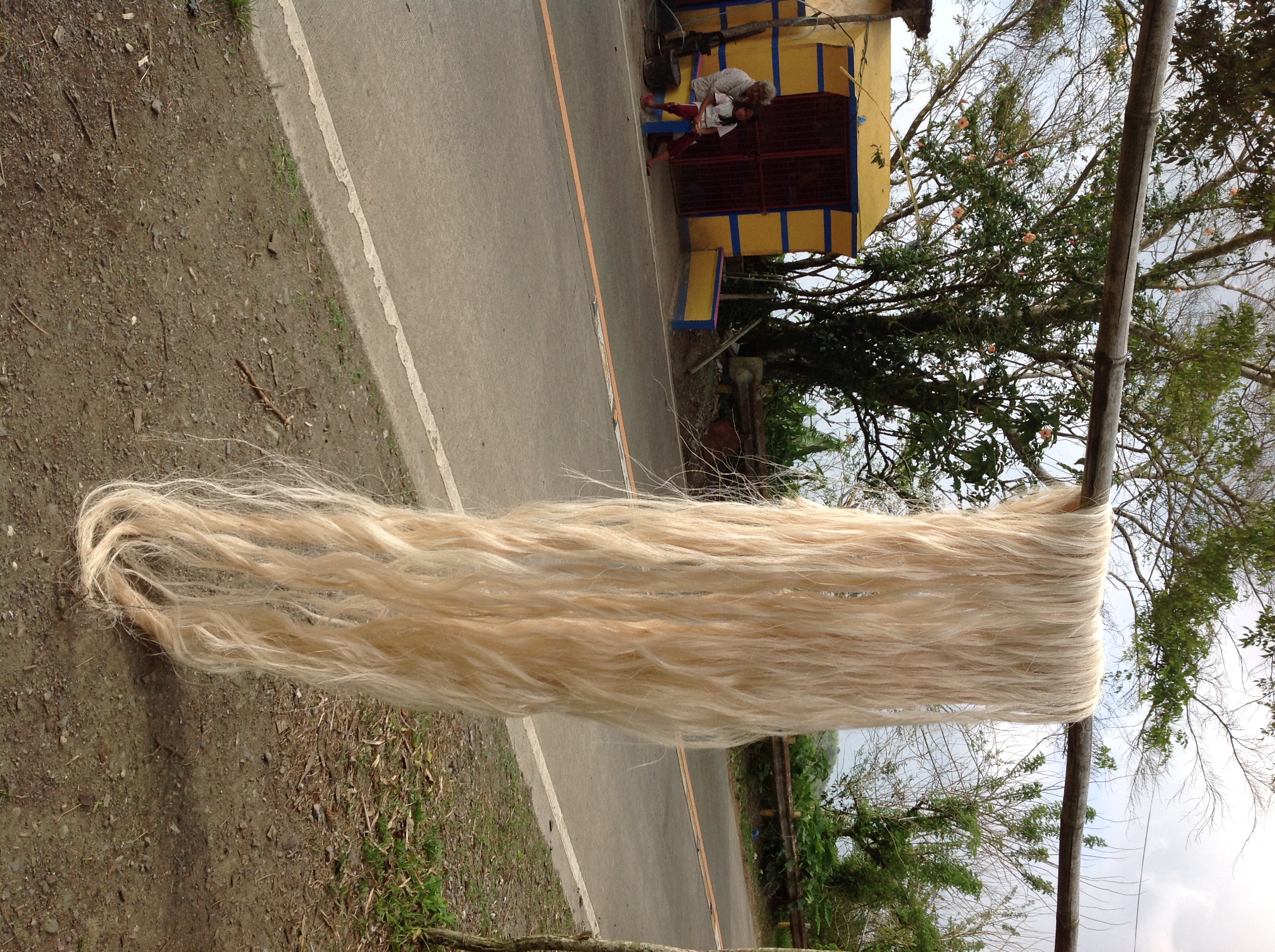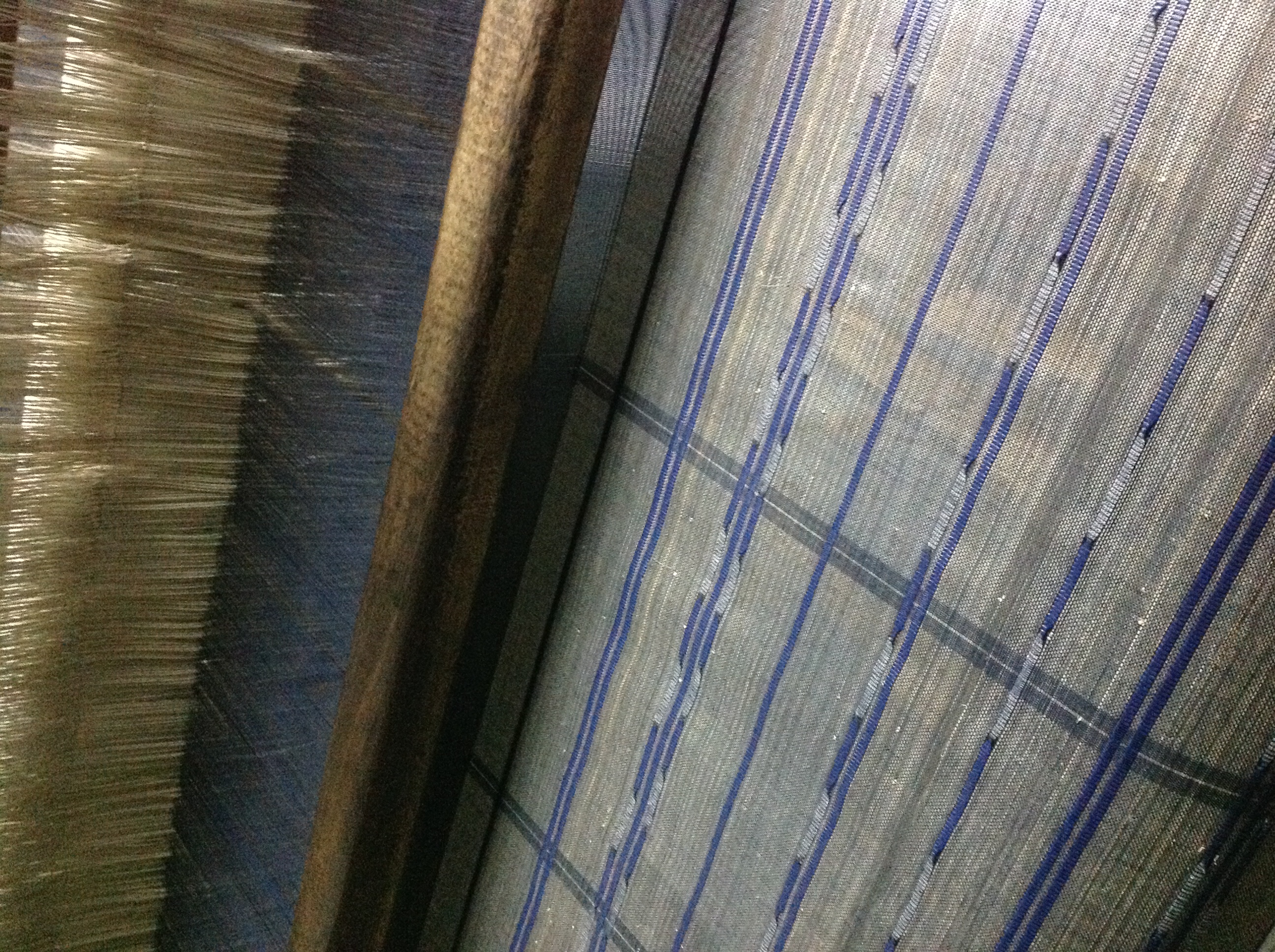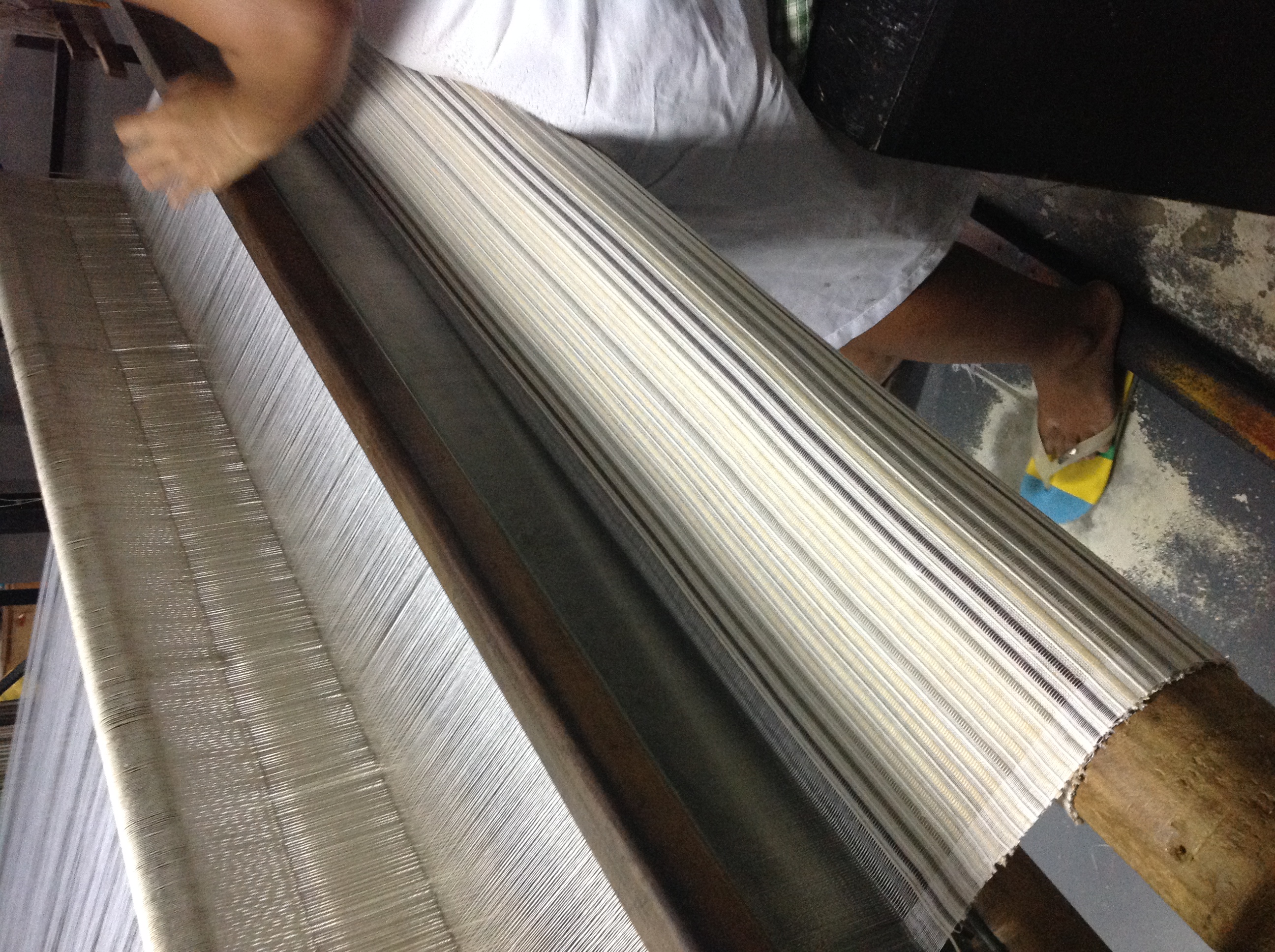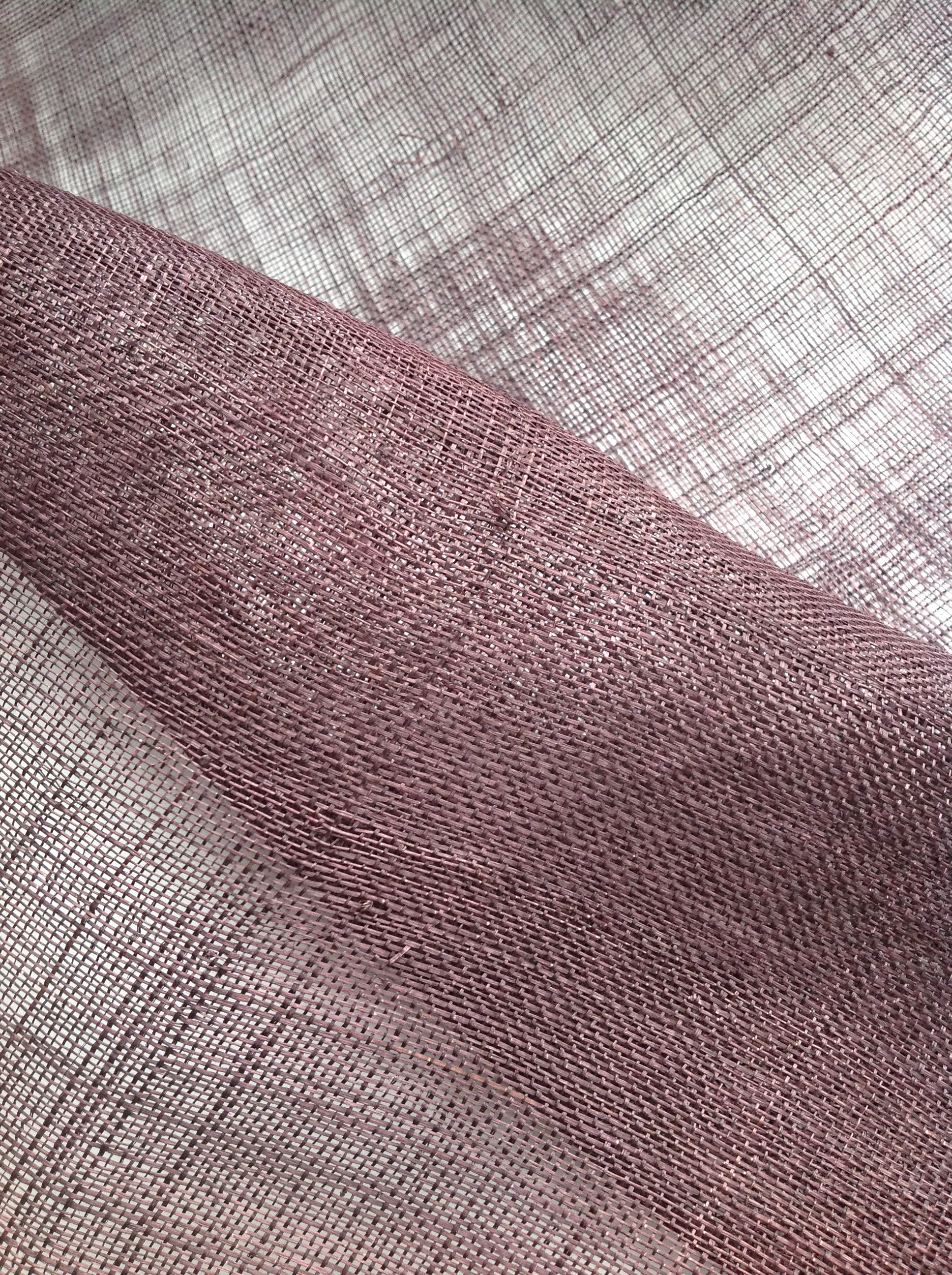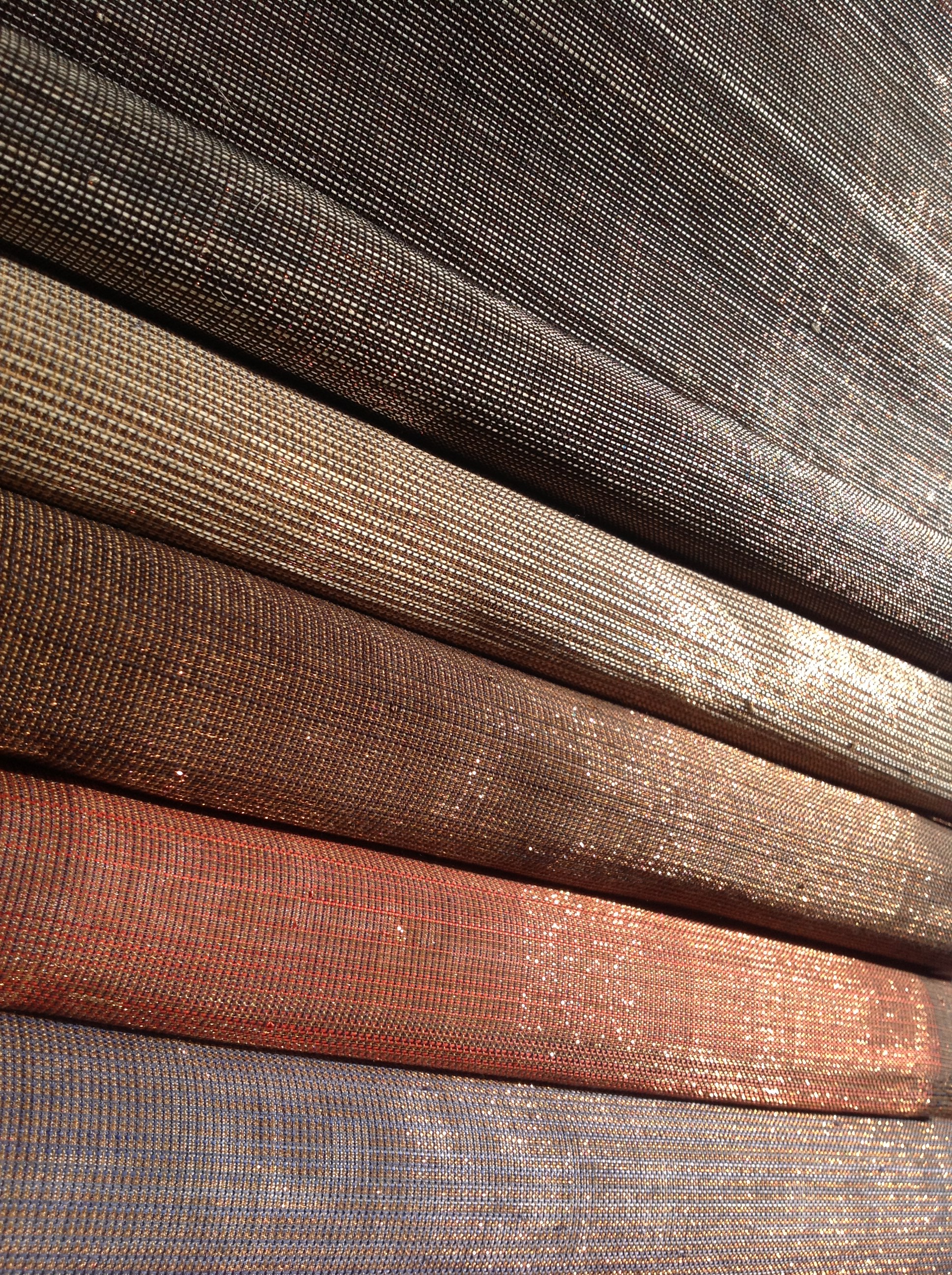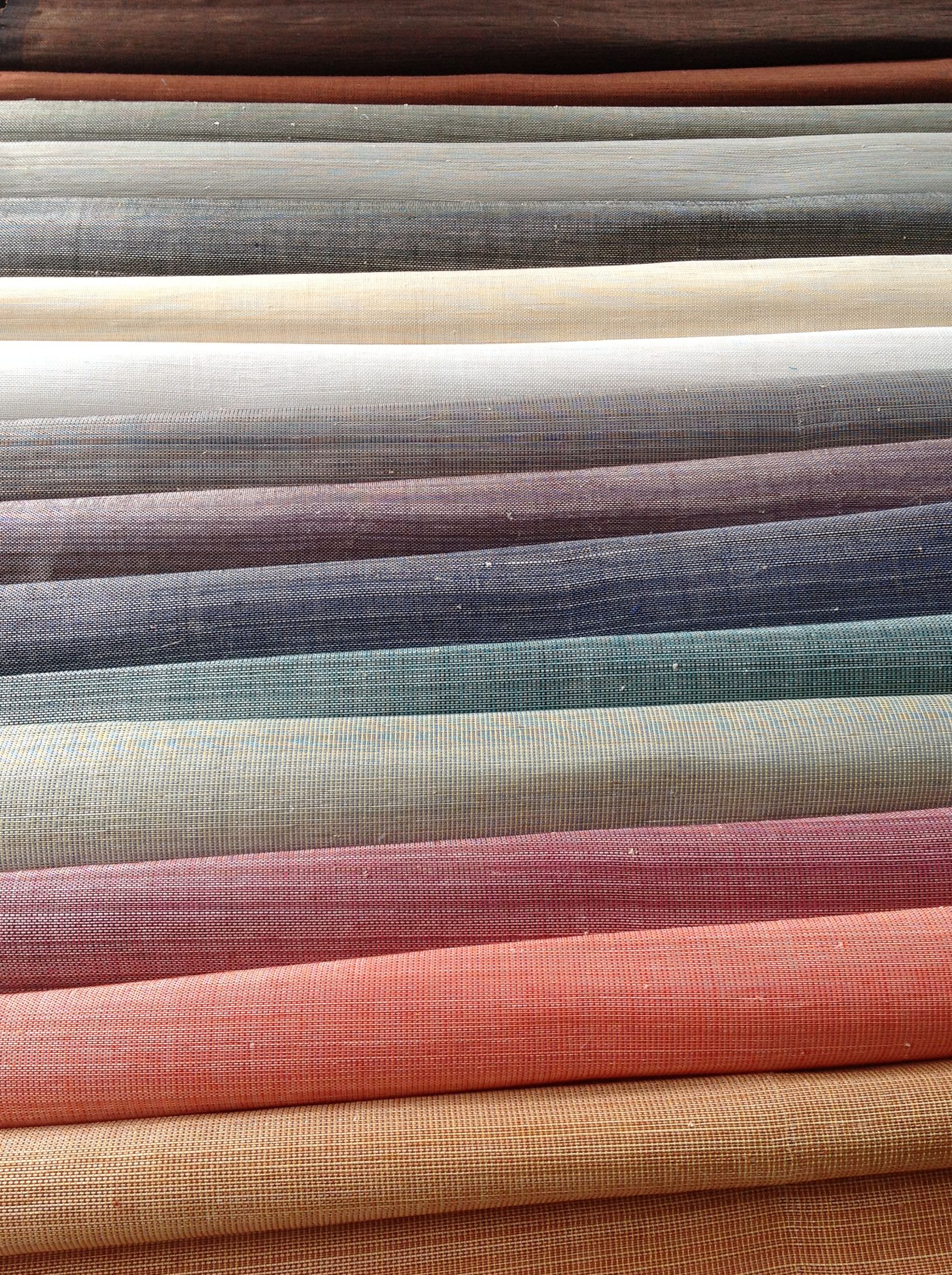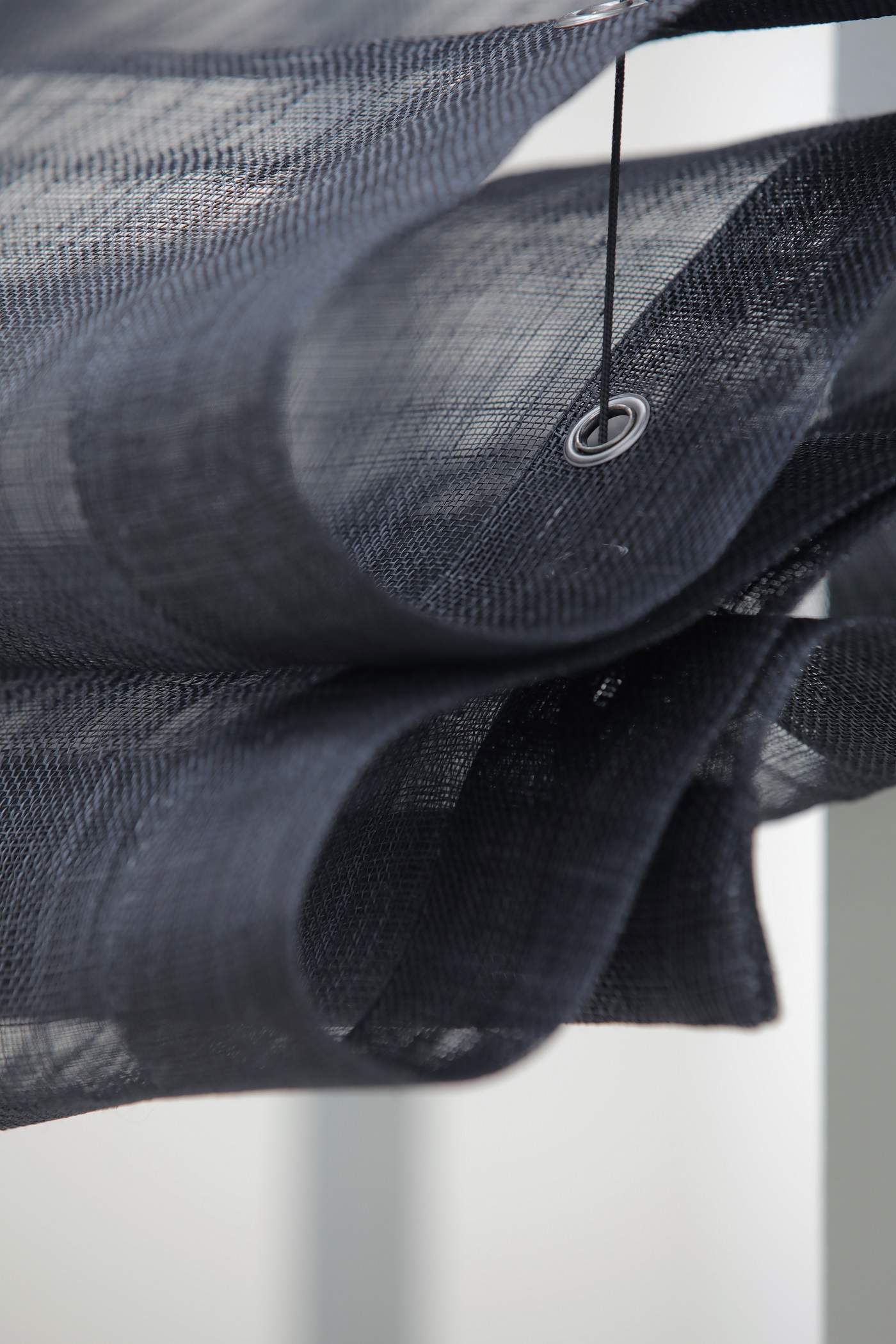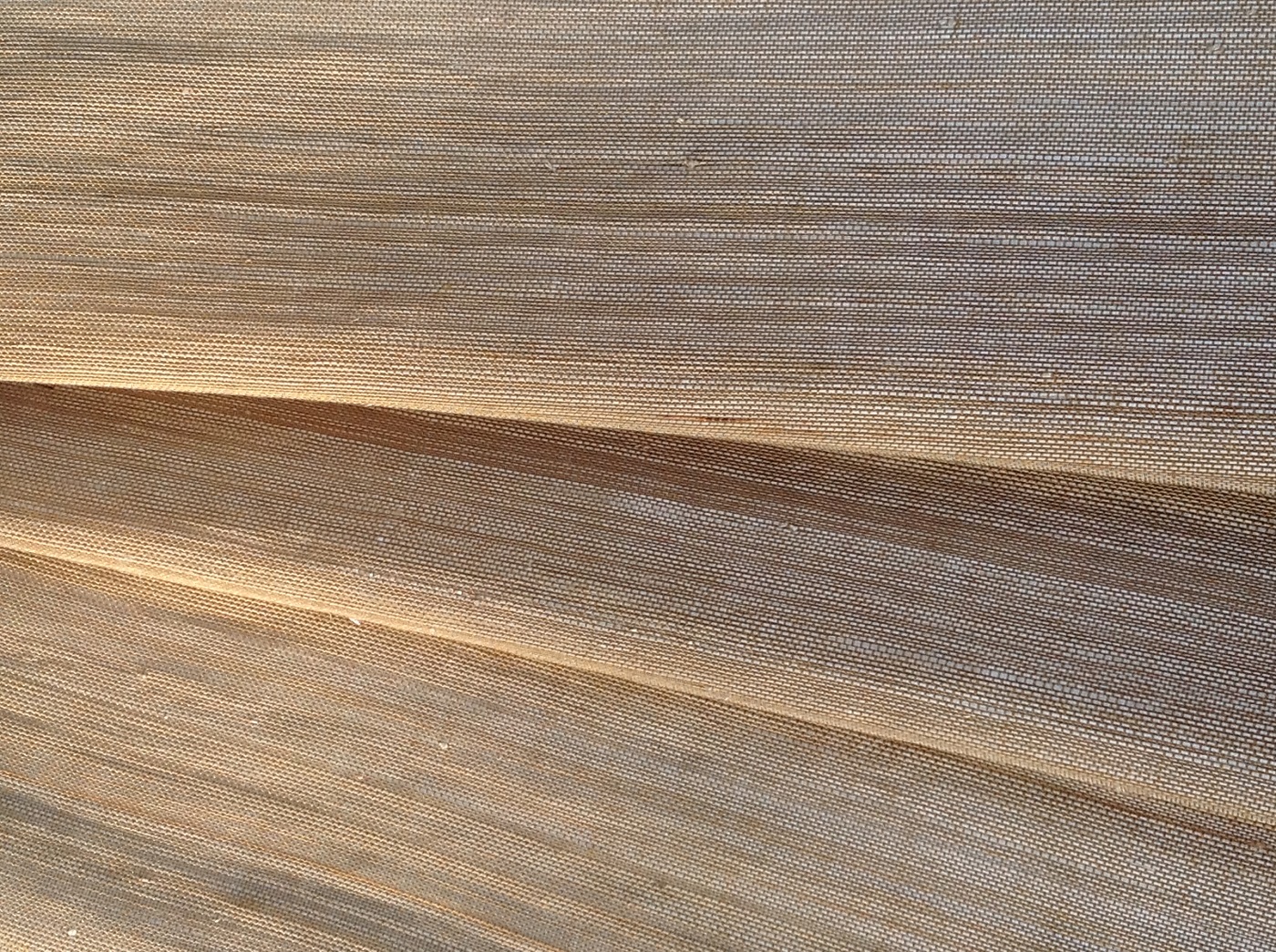80% of Abaca’s production is used for paper feet and 20% for textiles.
Sorted into five quality levels (from the thinnest to the thickest), the fibers are knotted by hand to obtain skeins. Each piece is woven manually on traditional looms in wood or metal.
The variations in color of abaca in weaving are inherent in the seasons and places of harvest of the fiber. These variations give each feature its unique and exceptional side.
This ancestral Filipino know-how in woven braiding and hand woven in vegetable fibers revisited by French designers promotes great creativity to make blinds, Japanese panels or wall covering.
Abaca mixes with many other materials, such as copper, leather, plastic, and makes very creative and innovative fabrics.
The use of Abaca also respects the concern to work with natural fibers and contribute to the protection of the planet.
There is no deforestation, the banana is not uprooted, the trunk is cut 40 cm from the ground and the plant regrows in two years. The trees are scattered throughout the wild and are not planted according to the intensive production method.
